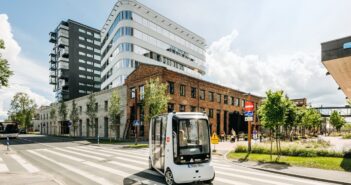This is a series of MIPIM Connect session reports from partner schools. In this post, University of San Diego reports on Expert Insights: Investment. Watch this session and more on MIPIM Connect now!
Although COVID-19 presents cities around the world with significant challenges, it is important to recognize that many of the trends which were present, and well underway, prior to the pandemic and are now being significantly accelerated. As investors seeking to anticipate how a post-COVID world will impact cities and economies, this context is important to keep in mind. Most changes in behavior are not new, they are simply playing out within months instead of years. The Holland Partner Groups shared these and other insights during a recent MIPIM Connect session in which he discussed how Holland views the impact of COVID on investment globally.

Clyde Holland – CEO/Chairmain, Holland Partner Group
Trends that were in place before COVID have really been accelerated – Holland
Commercial real estate and cities, in general, were well on a path of greater integration of technology into the built environment, sustainability, and with more emphasis on resilience. “Technology has been accelerated,” Holland noted, and the “trends that were in place before COVID have really been accelerated.” This corresponds with a recent MIPIM World Blog, “Sustainability, Coronavirus, and Real Estate,” in which Ying Paris Mo noted Anthony Slumber’s remarks during a Propel by MIPIM Daily Talks webinar regarding sustainability, predicting “in the next 12 months, we’ll see the same change that would have happened in the next 5 years.
From an investment and development perspective, the Holland Partner Group remains focused on and invested in the “innovation centers in the western United States” with an eye for how and where to “add key elements of housing that will support the growth” they are seeing in those cities. Key elements that Holland considers, when looking at which cities will thrive, include “critical mass, the creative class, education, research, and the availability of capital.”
One indicator of economic growth that can help investors anticipate which markets will attract a disproportionate amount of future capital is an increase in the creative class. Holland points out that “the education centers of the east [United States] and the older established innovation centers are losing creative class to the west [United States],” which is “where the growth is really happening.” Additionally, as much of “5-10% of the workforce may move to a work-from-home format that will be permanent” due to “increased productivity being observed” as well as being a “more efficient format” for some, especially those scenarios that involve “families, childcare, or long commutes.” This latter trend not only serves to increase the resilience of some cities, but has proven to be advantageous to the innovation center of Denver due in part to its central location that makes it possible to fly most anywhere in the US in under 3 hours, combined with offering an amazing climate and lifestyle. By observing these trends, it can be seen how a city like Denver will “take a disproportionate amount of the work from home” opportunity associated with this accelerated trend toward resilience as is already evidenced by an influx of leasing that is coming heavily from New York among other more expensive markets.
Another key theme to cities emerging stronger in a post-COVID world is their “ability to demonstrate both sustainability and resilience,” because “the investment in those cities will also see increases as companies look forward.” Cities that empower companies to access the creative class in a “way that gives them a competitive advantage in terms of access to talent and the cost of that talent” will lead to exciting times in terms of investment. Ultimately, it is about what markets “embrace change, rather than resist change,” that will “separate cities with their growth and the opportunity for investors to make solid investments” in the placemaking space as needs for housing, especially transit-orientated affordable housing, continue to grow.
Top Image: Getty Images – aprott



